This Unique Pair of Vintage Goldtops Has Some Extra-Special Bling
Find out what this uber-rare dual P-90 1956 Les Paul and PAF-loaded 1957 model have in common with David Davidson of Well Strung Guitars.
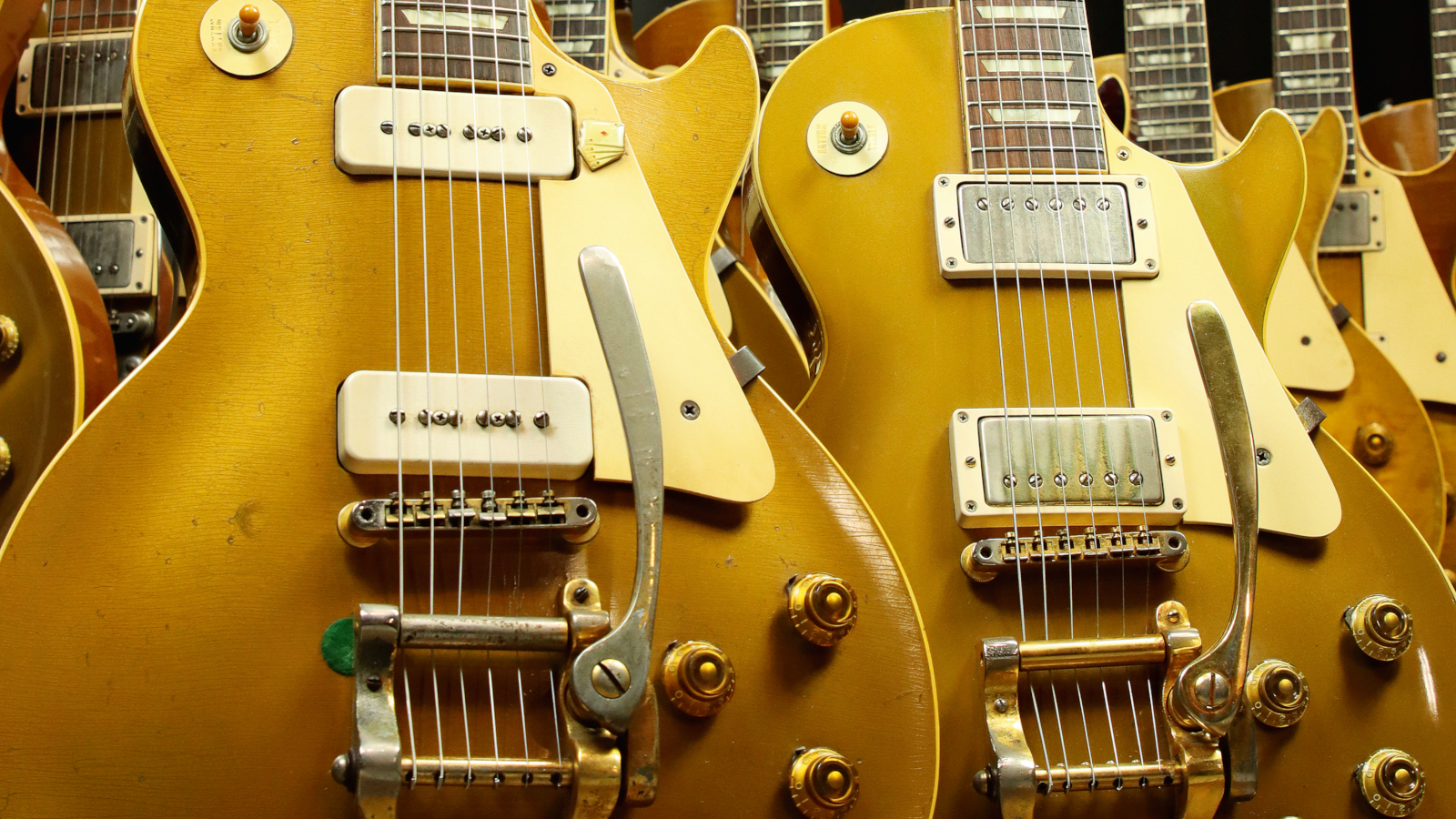
While Fender seemed to hit it out of the park with the Esquire on its first run, it took Gibson several tries to get to its best guitar. The fact is the first Les Pauls with the trapeze tailpiece had several problems. The neck angle was bad and there was no way to palm[-mute] the strings. In other words, there was no way to play the guitar the way we like to play it.
While Fender seemed to hit it out of the park with the Esquire on its first run, it took Gibson several tries to get to its best guitar
David Davidson
The way Les liked to play was different, however; he was a jazz guitar picker and he didn’t really palm the strings. It didn’t matter much to him.
Consequently, the guitars from ’52 [when the Les Paul Model/Goldtop was released] to early ’53 are tougher to sell, and many people have used them for conversions to ’Bursts if they happen to have some nice maple underneath [the gold finish].
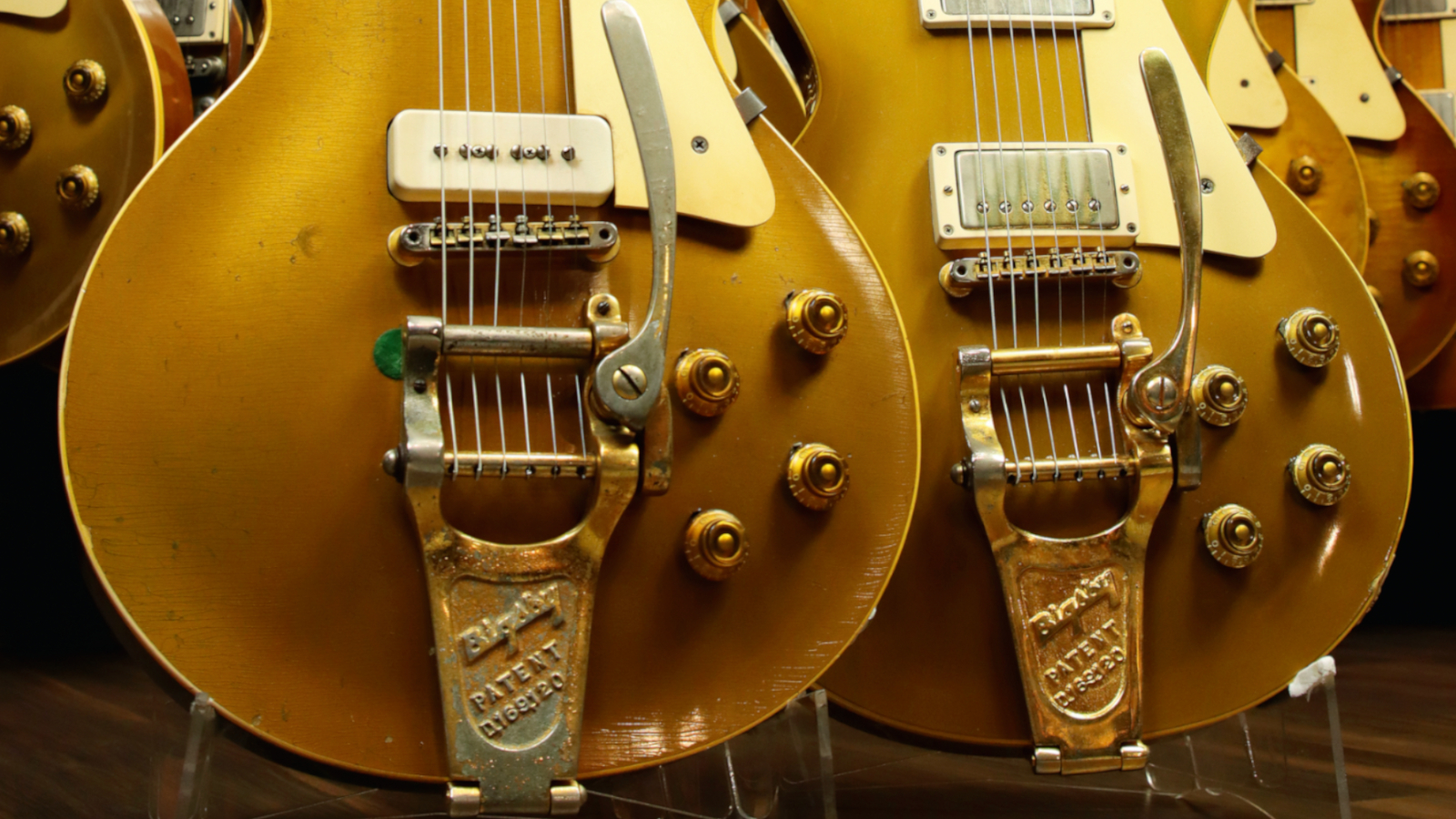
One of the first things Gibson did as an attempt to improve the design was to incorporate a stud tailpiece in ’53. But even though the stud tailpiece was much more operable than the trapeze, the company hadn’t yet engineered a new [deeper] neck angle. So the guitars that were made through ’53 and up to the early part of ’54 are affected by that. The shallow angle makes the guitars more difficult to play.
One of the first things Gibson did as an attempt to improve the design was to incorporate a stud tailpiece in ’53
David Davidson
Gibson eventually worked out this problem with the neck angle and, by the first quarter of 1954, it started to make what became the first really usable solidbody electric Les Paul. It has a significantly deeper neck angle, and this means that the guitar can play all the way up the fretboard without choking. But Gibson was still addressing certain other things like weight and balance. It took a little while to iron it all out.
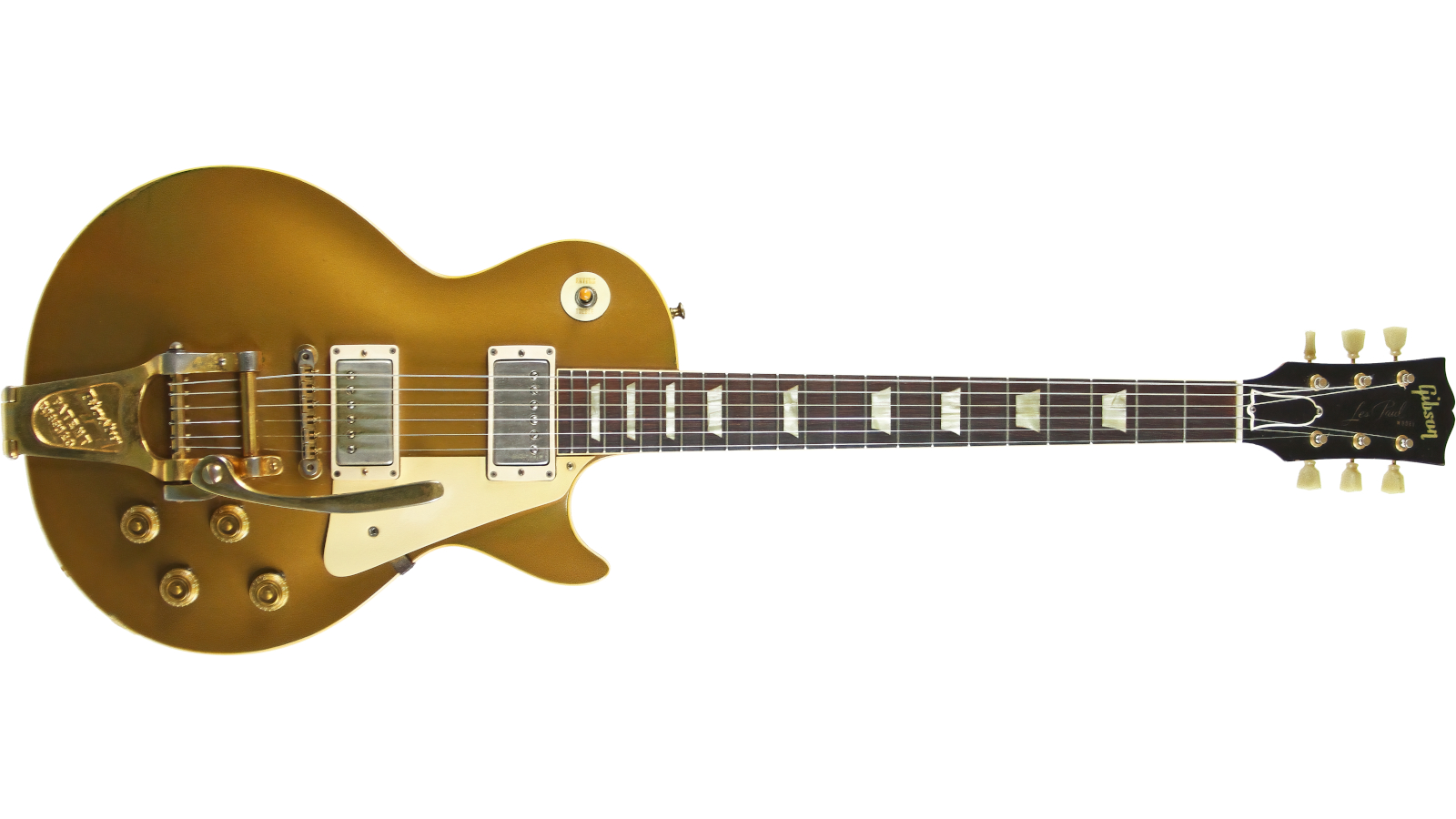
The biggest change came in mid-’55 with the introduction of the ABR-1 [Tune-o-matic] bridge. It meant you could now intonate the guitar properly. The guitars were originally sent out with 0.013-gauge strings with a wound G string, but the ABR-1 bridge accommodated a set of 12s with a plain G string. And that made a big difference to players as they could now bend the strings more easily, even though the frets were still a little on the small side.
By ’56, Gibson was nearly there with the Les Paul design. And, in the back room, Seth Lover was working on the humbucking pickup
David Davidson
By ’56, Gibson was nearly there with the Les Paul design. And, in the back room, Seth Lover was working on the humbucking pickup. He’d already made it by ’56, but he wasn’t able to get it into a guitar [until ’57] because the pickup routs would need to be re-engineered to accommodate the different size. But the PAF humbucker was the big game-changer.
All the latest guitar news, interviews, lessons, reviews, deals and more, direct to your inbox!
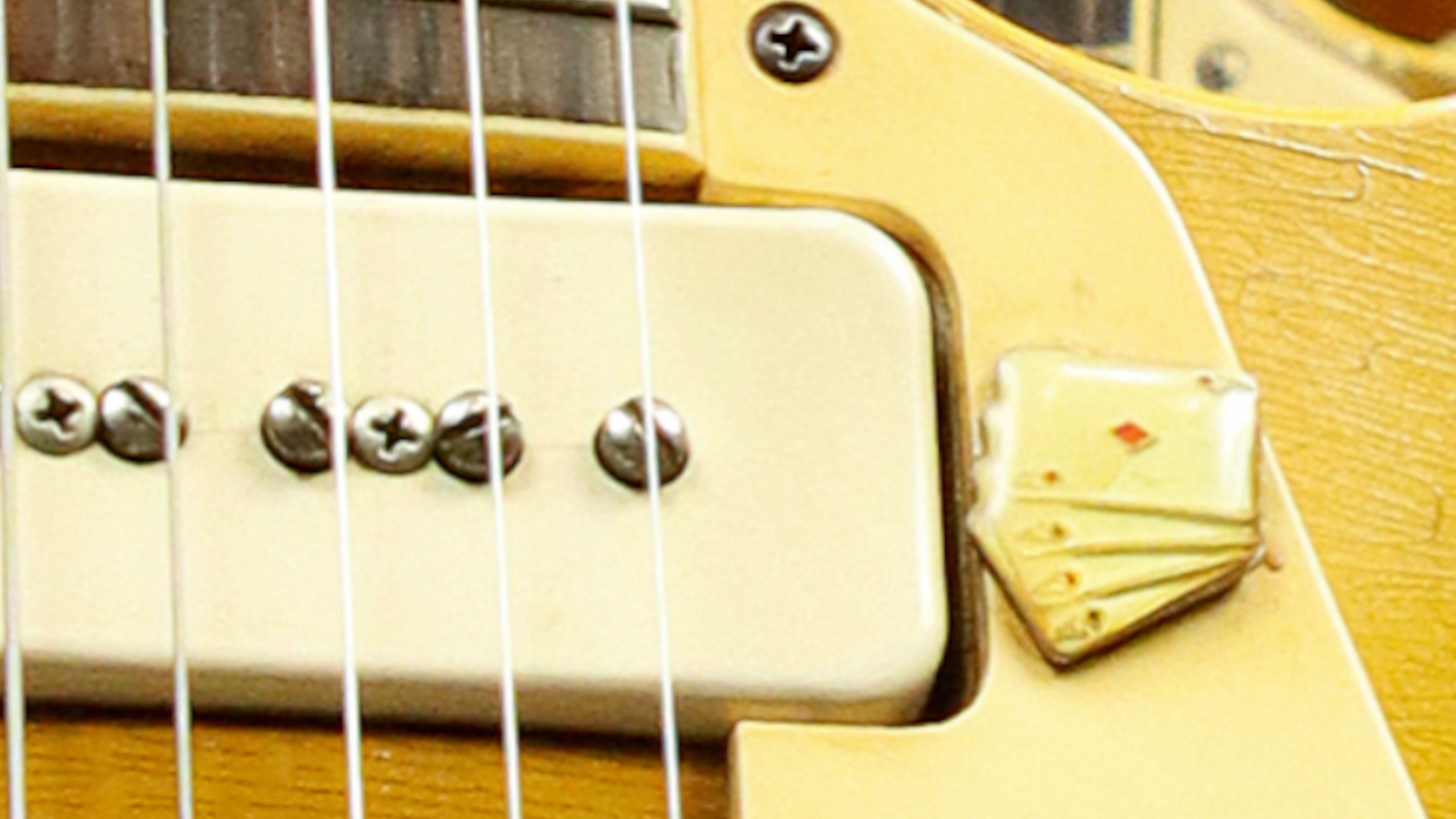
The two Goldtops seen here are incredibly rare; they’re the only Les Paul Models I’ve ever seen with gold hardware.
The dual P-90 1956 guitar has original gold parts, including a factory-fitted Bigsby. The guitar player for the 1950s doo-wop band The Four Aces custom-ordered this guitar and found a playing card appliqué to put on the pickguard. Its sibling guitar is a PAF humbucker-loaded ’57 model. It’s a factory Bigsby guitar and it has the original sales receipt that is marked “gold hw/gold Bigs”.
Some people are humbucking people, and some people are single-coil people. And Les Pauls can do it all
David Davidson
They’re both really neat guitars for those reasons, but the point is they also play amazingly well.
The PAF was the shot heard round the world, but these Les Paul guitars also sound phenomenally good with P-90s. Some people are humbucking people, and some people are single-coil people. And Les Pauls can do it all. They work well with either type of pickup.
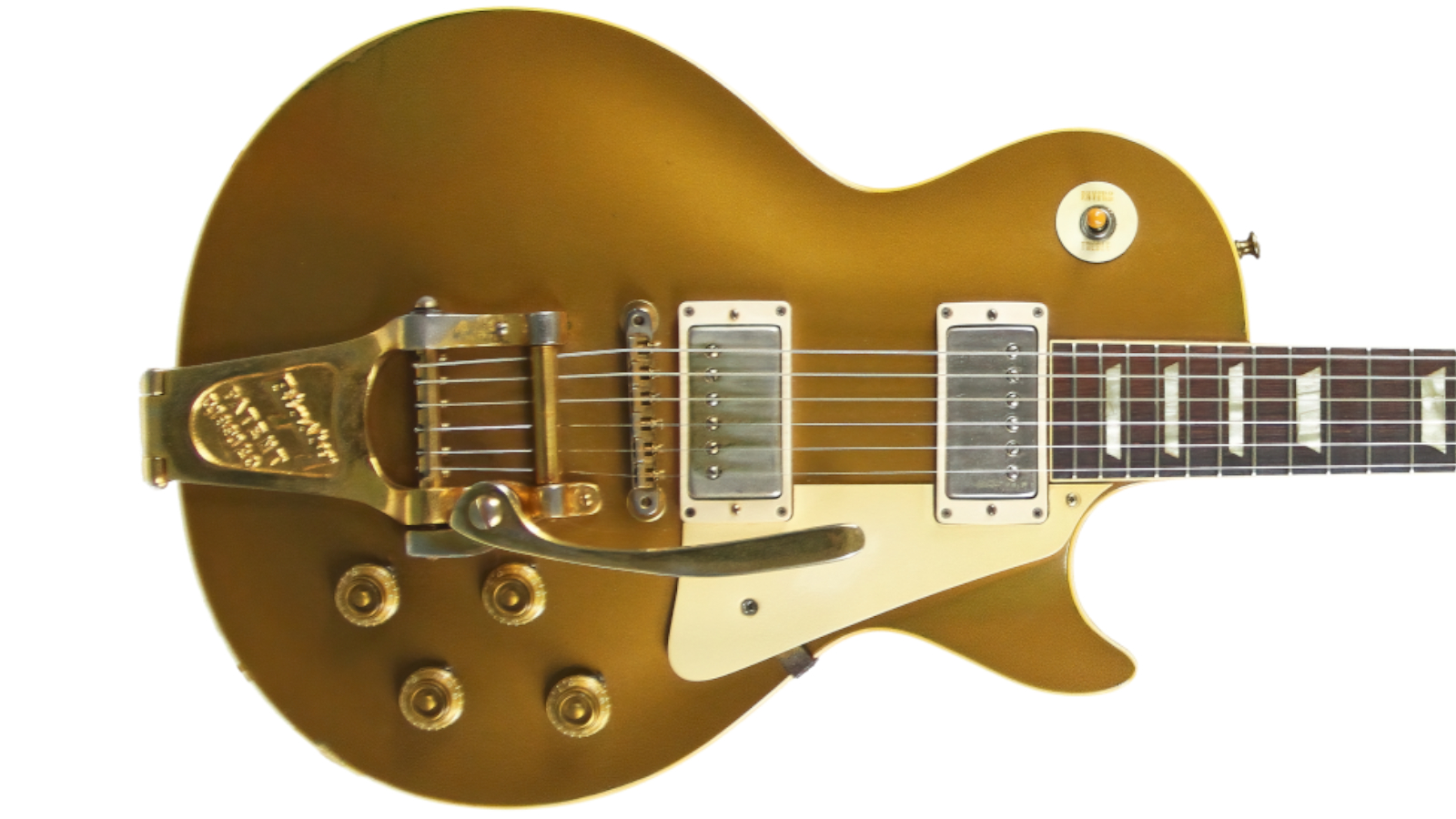
When it comes to Gibson, it had enough money to make a few attempts and survive any fails, whereas Fender was a smaller company and needed to nail it right away. It didn’t have the time to revisit the designs, make changes and retool. You have to think about the amount of engineering that goes into making these kinds of changes – all the processes involved in changing from a stud tailpiece to an ABR-1, for example.
People can dream up guitars because all that stuff is already there… But I think it’s worth remembering that it didn’t always exist
David Davidson
These people were a lot smarter than me! When your kids are in school and they’re pissed off about having to do calculus and trigonometry, remind them that that kind of knowledge helped build things as cool as these two guitars. Engineering is hard work. But there’s good, strong thinking behind these designs. I’m not one of those people, but there are those who can think this far out of the box.
I mean, a lot of people can dream up guitars because all that stuff is already there. It’s easy to take for granted. But I think it’s worth remembering that it didn’t always exist. Somebody invented all of this. And I think that’s pretty remarkable.
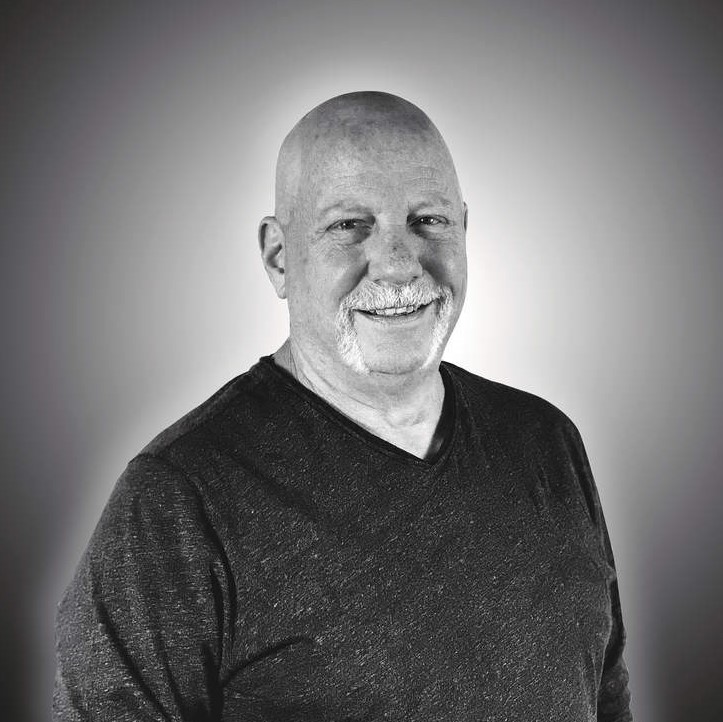
Vintage guitar veteran David Davidson owns Well Strung Guitars in Farmingdale, New York.
info@wellstrungguitars.com / 001 (516) 221-0563
Rod Brakes is a music journalist with an expertise in guitars. Having spent many years at the coalface as a guitar dealer and tech, Rod's more recent work as a writer covering artists, industry pros and gear includes contributions for leading publications and websites such as Guitarist, Total Guitar, Guitar World, Guitar Player and MusicRadar in addition to specialist music books, blogs and social media. He is also a lifelong musician.

